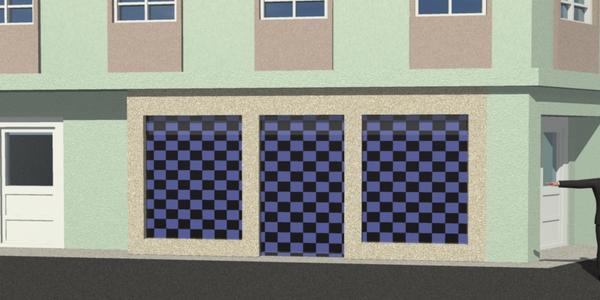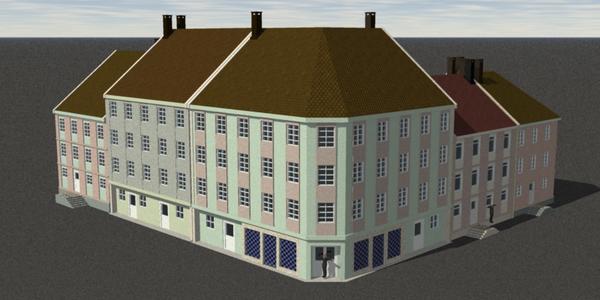Sparrowhawke - The Instance Randomizer
 Varsel
Posts: 574
Varsel
Posts: 574
After being inspired by PhilW, and his InstaCity, I started to model some of the buildings that I can see in parts of my city.
They are all mostly in the same shape and size, with small decoration differences.
They are built of plastered bricks or concrete, normally in some pastel color.
Lots of them have small shops on the ground floor, from Pizza to hairdressers....
But my question is : is it possible to use the plug-in to change texturemaps for the shops.
If I have 10 different shops, the plug-in could randomly pick one.....


shops.jpg
800 x 400 - 218K


Buildings.jpg
800 x 400 - 221K


Comments
Thinking out loud, which is always dangerous. Would it be possible to use a layer list function and have each texture map loaded in a different layer and then use either the formula function or the instances randomizer or the "global" settings on a math function to set all the opacity masks to 0, except one which would be set to 1, and controlled by various u/v coordinates?
Nice modeling job, BTW
Thanks diomede64
Thinking out loud is dangerous, but brainstorming sessions does always generate funny results...
I didn't quite understand what you said ;-) , but while trying to follow your thoughts you got me thinking, and by using the mixer function,
and using the Instance Randomizer as a blender, I got something that looks like it might work.
What I found also, was that I had to set a a different value for the seed in each instance of the Instance Randomizer.
If not, it was only two colors that would be used.
Congratulations! Looks like your solution with the randomizer worked well. I can see a lot of uses.
I still might test my idea but I can't until my computer gets back, but essentially I am suggesting using functions that can be made to return a zero or a 1 in a jumbled way at the least or randomly at best. If so, then the opacity masks or mixers can be made to return a single complete shader tree or another, but no mixing. Then either with a layer list or nested mixers, multiple options could be made available. Consider a gradient that is base black with just one totally white bar. Use a fractal noise function to drive the gradient with the global tab checked. The gradient should always return either total black or total white (0 or 1) even though the fractal driver might be a shade of gray for that location. Create a second shader with the white bar in a different location in the gradient color box. Same effect but the active zones should be different in theory. So the layer list or mixer would return only one of the embedded shaders for each location, but you could make the shader as complex as you want. Just theory, but now I am curious. I think the formula function could be even simpler.
Then again, why am I obsessing? You have already demonstrated that sparrowhawke solved this. Nice work.
No. My idea would not work as is. It would need to be able to identify the instance's hot point or similar to have a single value for the whole object. I bet that is the component in the plugin. Well done, Sparrowhawke! You too, Varsel.